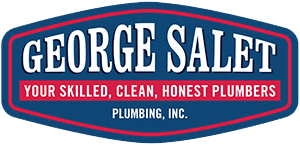Home Renovations and Hazardous Chemical Exposure
Home Renovations and Hazardous Chemical Exposure
The last few decades have given us an abundance of DIY instruction, videos and even television channels dedicated to the subject of home renovation. The appearance of the big box hardware stores is directly tied to the popularity of how simple most of these projects can be.
Proceed with Caution
The sweat equity most homeowners earn is something of which to be proud, especially when it proves to increase a home’s value, encouraging many to take on flipping houses as a career. However, there are some serious precautions that need to be taken before embarking on a home renovation, especially in bigger or older homes.
Hazardous Chemicals
Asbestos
One of the most dangerous hazardous exposures having emerged from the demolition involved in home renovation. Known to be a human carcinogen, asbestos minerals are composed of long heat resistant fibers that were once spun so they could be woven into the material universally used in home insulation and fireproofing.
The danger exists from breathing in these fibers that easily become airborne. The particles from asbestos when inhaled cause damage to the mesothelium in the lungs, resulting in mesothelioma that may not appear until many decades later. Despite banning this material in all modern construction, older construction is at risk of exposing residents and those performing any work on that construction. Always wear a protective breathing apparatus when dealing with asbestos.
Mercury
Mercury is an inorganic substance used in older thermostats and in light switches that were once used in older homes. While Metallic Mercury doesn’t absorb through the skin, it will vaporize even when exposed at room temperature. The scary part is these vapors are odorless and colorless.
The dangers to humans from Mercury exposure are:
– Developmental, affecting the organs in the process of development
– Gastrointestinal, affecting the digestive system
– Renal, affecting the kidneys and urinary tract
– Neurological, affecting the nervous system
– Ocular, affecting the eyes
Lead
Lead is another inorganic substance less commonly used yet still present in the paint, pipes and within the walls in older homes. Historically, lead found in paint chips that babies innocently chewed on was responsible for giving them lead poisoning. Since then, lead content in paint, caulking, ceramic products and pipe solder have been greatly reduced. Older pipes that tend to corrode will release lead particles.
The dangers to humans from Lead exposure are the same as those for Mercury with the addition of the following:
– Cardiovascular, affecting the blood vessels and the heart
– Musculoskeletal, affecting the skeleton and muscles
– Reproductive, affecting newborns and the reproductive system
– Hematological, affecting the forming of blood
Radon
Radon is an odorless, tasteless, invisible, radioactive gas created from the degradation of uranium. It is concentrated in the rocks and soils in the earth and seeps into homes through cracks and breeches in structures located in low-level areas. Radiation exposure from radon can occur through improperly ventilated spaces causing cancer and damaging the lungs.
Given these dangers, permits are required in many counties for remodeling jobs. Involving the permit office and the local health department to engage inspectors is the best way to learn what hazardous exposures are present in your house.
By Brian Turner
Guest Contributer
For more information: http://www.mesotheliomafund.com
